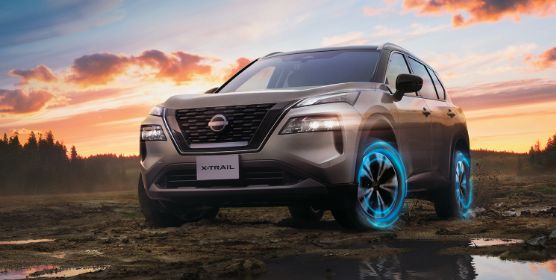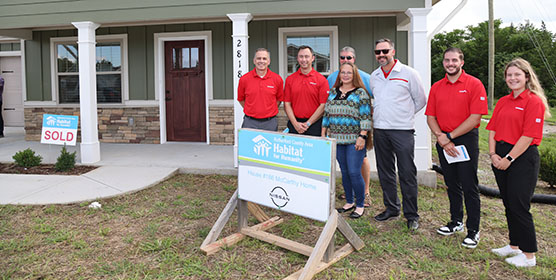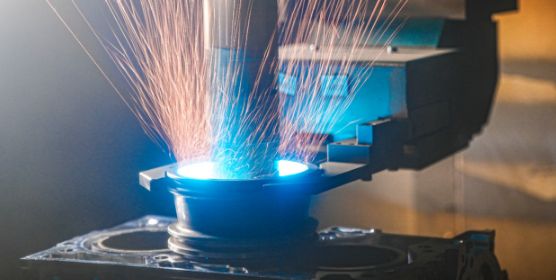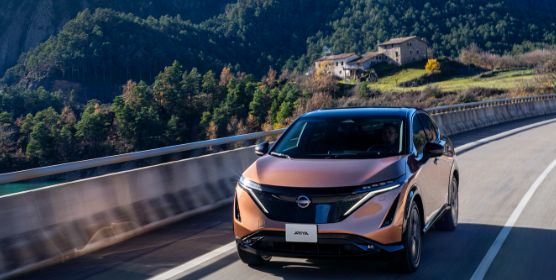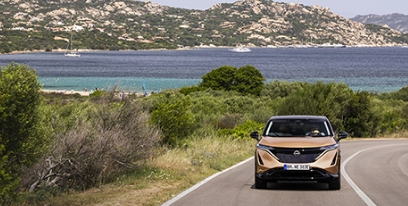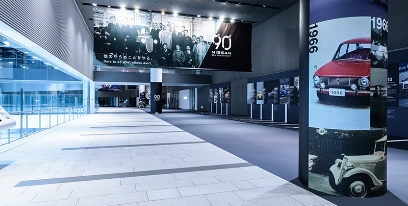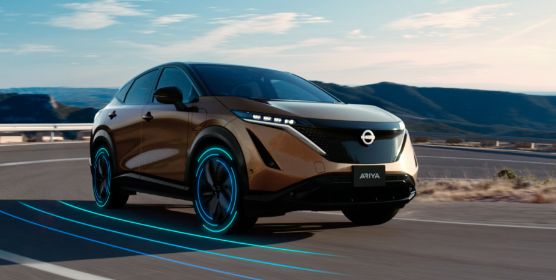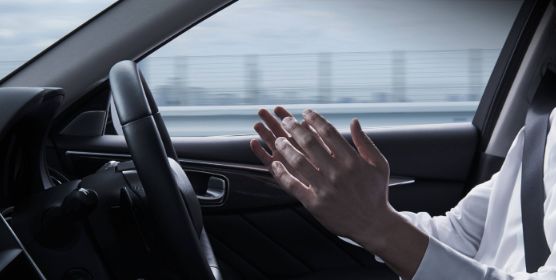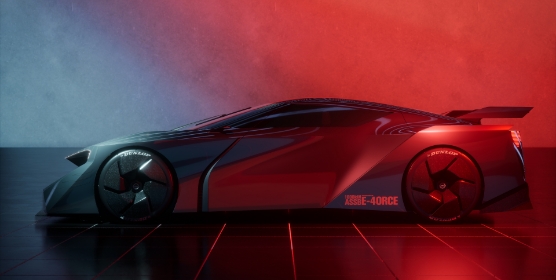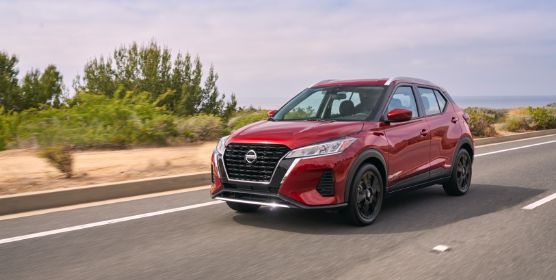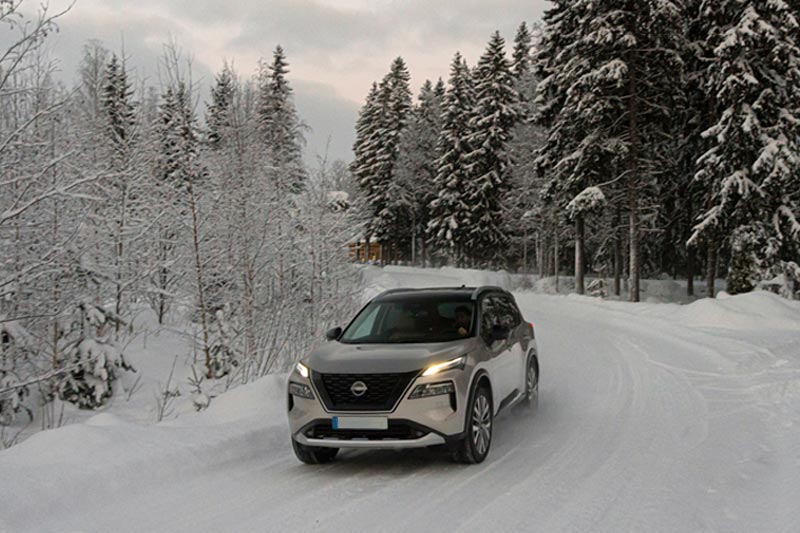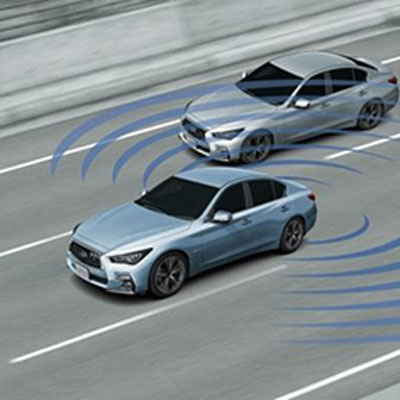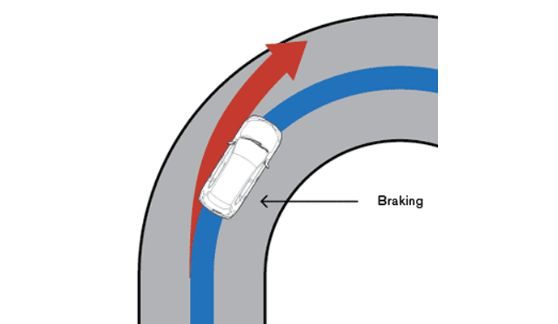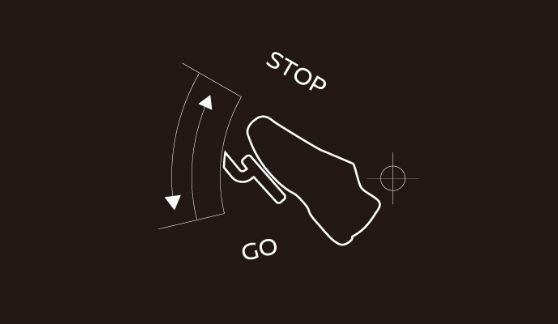Intelligent Ride Control
Realizing a more comfortable ride
When driving, a vehicle will encounter large and small bumps on the road. As the vehicle passes over certain bumps, passengers may feel a fore-aft pitching motion. The Intelligent Ride Control moderates this by controlling the engine and brakes, delivering a smoother driving experience.
Technology Functionality
When
the
driver
depresses
the
accelerator
pedal
and
engine
torque
is
increased,
the
front
half
of
the
vehicle
rises
up
slightly.
Conversely,
when
the
foot
is
taken
off
the
accelerator
pedal
and
engine
torque
is
reduced,
the
front
of
the
vehicle
lowers
back
down.
The
raising
and
lowering
of
the
front
of
the
vehicle
results
in
the
vehicle
exhibiting
pitch
behavior.
Intelligent
Ride
Control
takes
advantage
of
this
phenomenon
to
counteract
the
pitching
caused
by
bumps.
The
engine
torque
is
varied
slightly
according
to
the
bumps
in
the
road
surface,
which
decreases
the
pitching
motion
of
the
vehicle
and
allows
the
vehicle’s
occupants
to
have
a
more
enjoyable
driving
or
riding
experience.

In
addition,
the
vehicle
suspension
is
fitted
with
shock
absorbers
which
dampen
the
vertical
and
pitch
motions
of
the
vehicle.
When
dampening
is
strong,
the
motion
caused
by
bumps
on
the
road
surface
is
quickly
reduced.
Conversely,
with
weak
dampening,
the
motions
caused
by
bumps
can
continue
for
a
long
time.
Nissan
discovered
that
when
the
brake
is
applied,
it
has
the
effect
of
strengthening
the
dampening
of
body
motion.
Active
Ride
Control
includes
technology
developed
to
reduce
vehicle
pitching
when
passing
over
a
bump
by
automatically
applying
a
very
small
amount
of
braking.
The
amount
of
braking
is
not
enough
to
slow
the
vehicle
down
appreciably,
but
still
results
in
faster
dampening
of
the
pitch
motion
than
the
vehicle
using
shock
absorbers
alone.
With
Active
Ride
Control,
the
pitching
that
follows
when
a
vehicle
passes
over
a
bump
is
decreased
in
amount
and
duration,
and
the
driving
experience
becomes
more
comfortable.
Technology Configuration
When
a
vehicle
passes
over
a
bump,
the
wheels
speed
fluctuates
slightly
when
compared
to
the
same
vehicle
driving
on
a
flat
surface.
Using
sensors
to
detect
the
change
in
the
speed
of
the
wheels,
the
system
determines
when
the
vehicle
is
moving
up
and
down.
When
the
pitching
is
minor,
ride
quality
can
be
improved
by
increasing
or
decreasing
the
engine
torque.
When
the
pitching
is
greater,
the
system
applies
the
brakes
and
this
helps
minimize
the
body
motion
of
the
vehicle.
The
engine
torque
variations
and
the
brake
applications
are
small
and
smooth.
They
calm
the
vehicle
body
motion
but
do
not
result
in
appreciable
increases
or
decreases
in
vehicle
speed.
This
allows
drivers
and
passengers
to
simply
enjoy
a
more
comfortable
driving
and
riding
experience.






